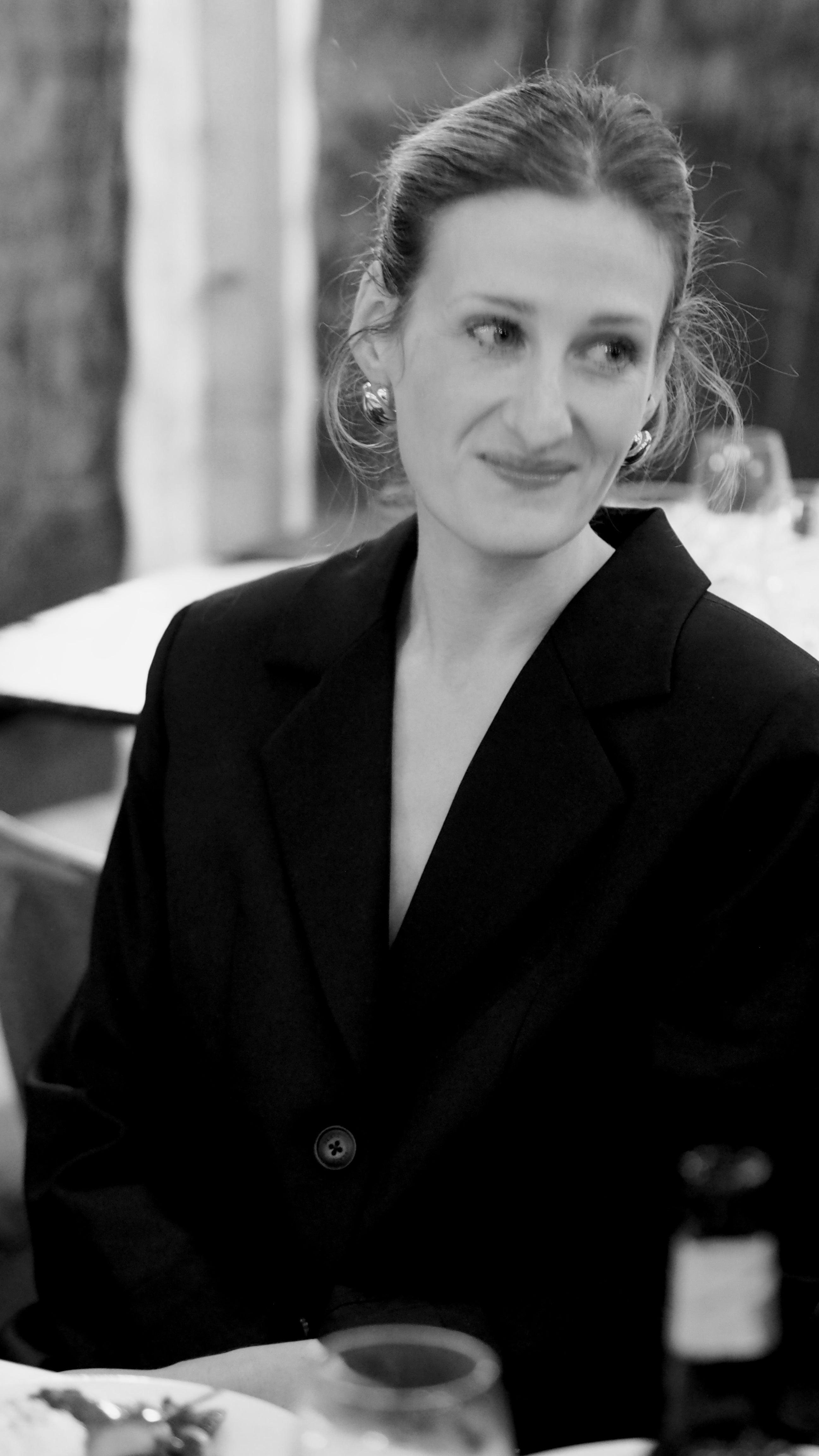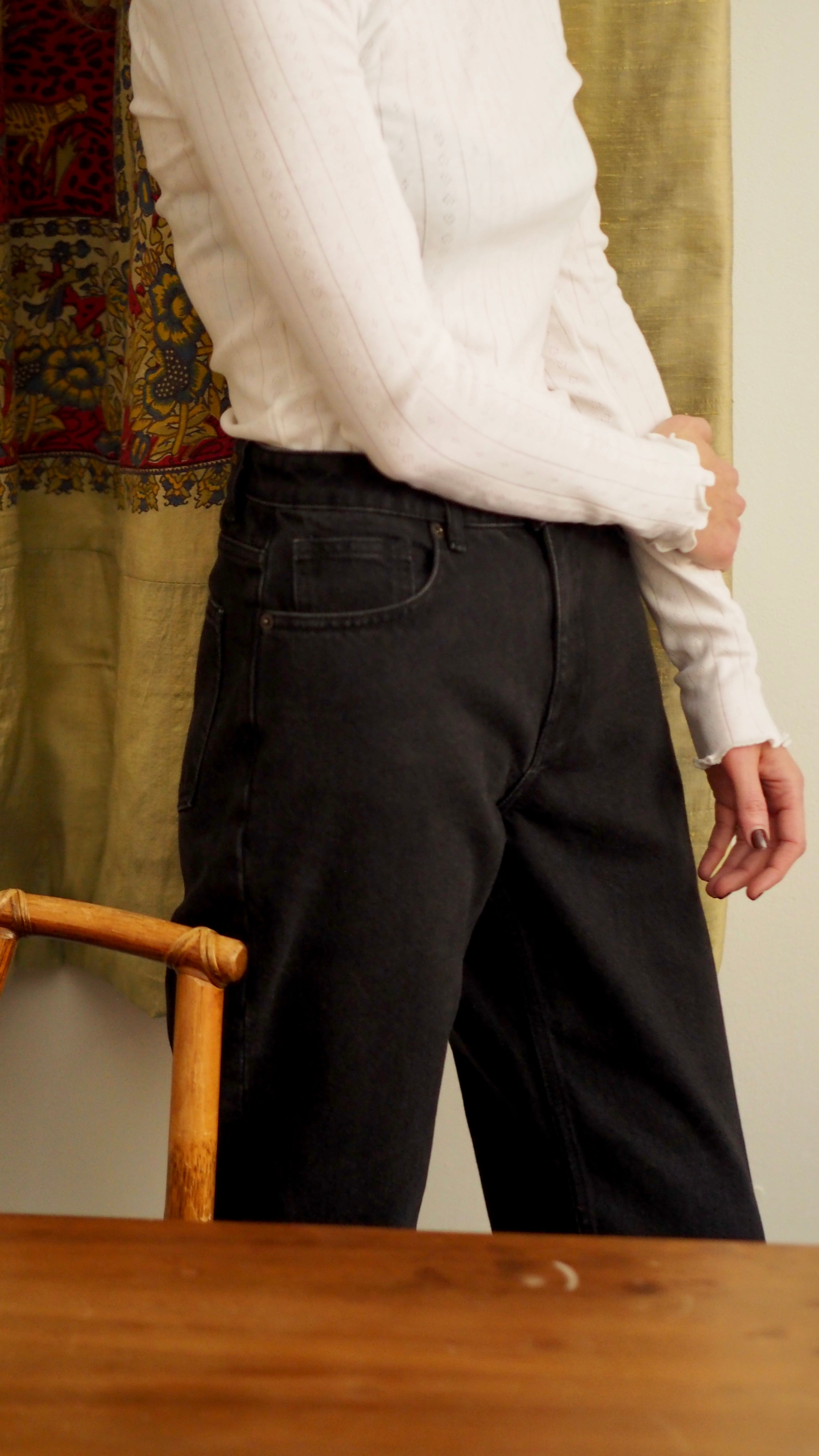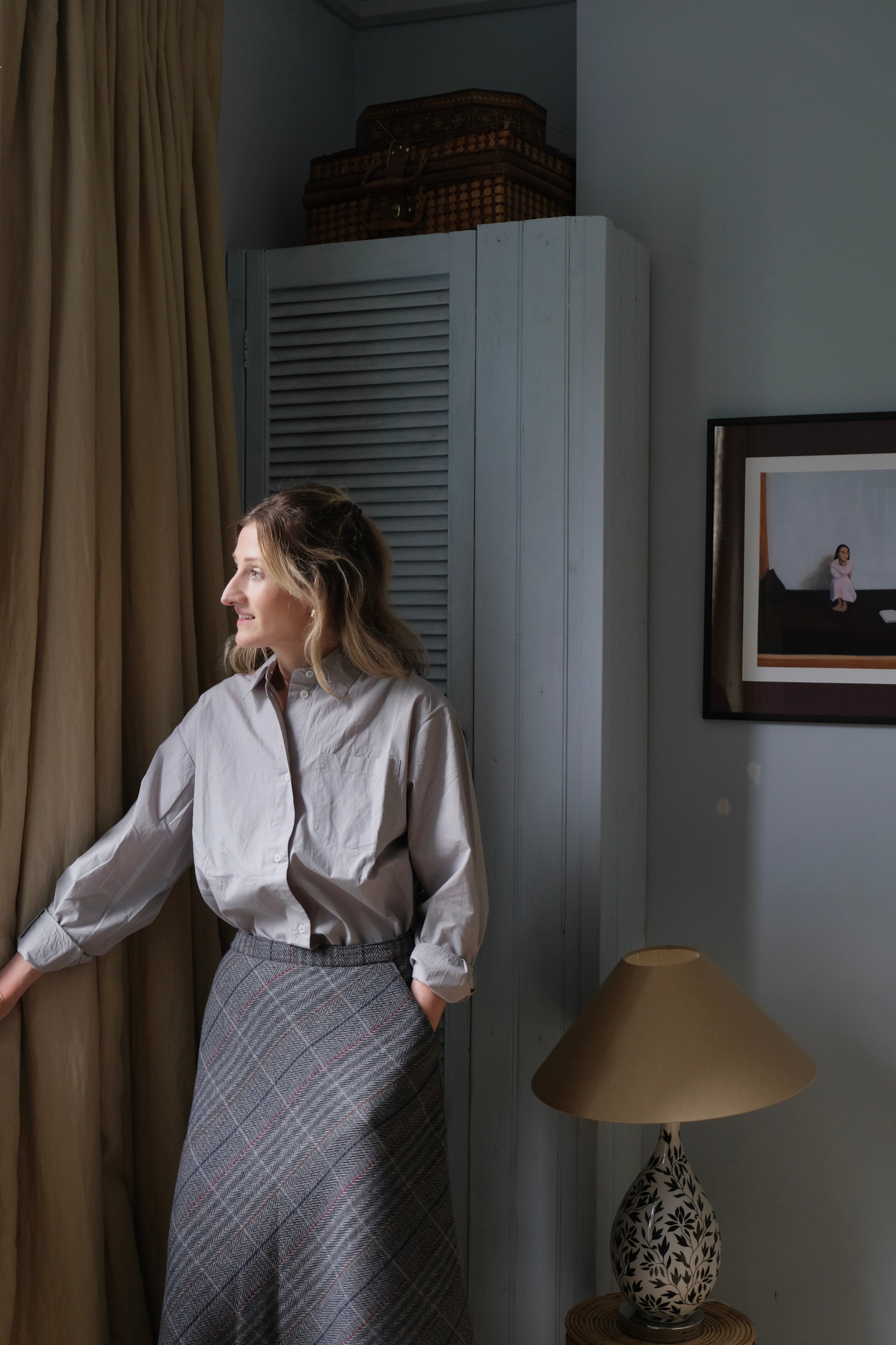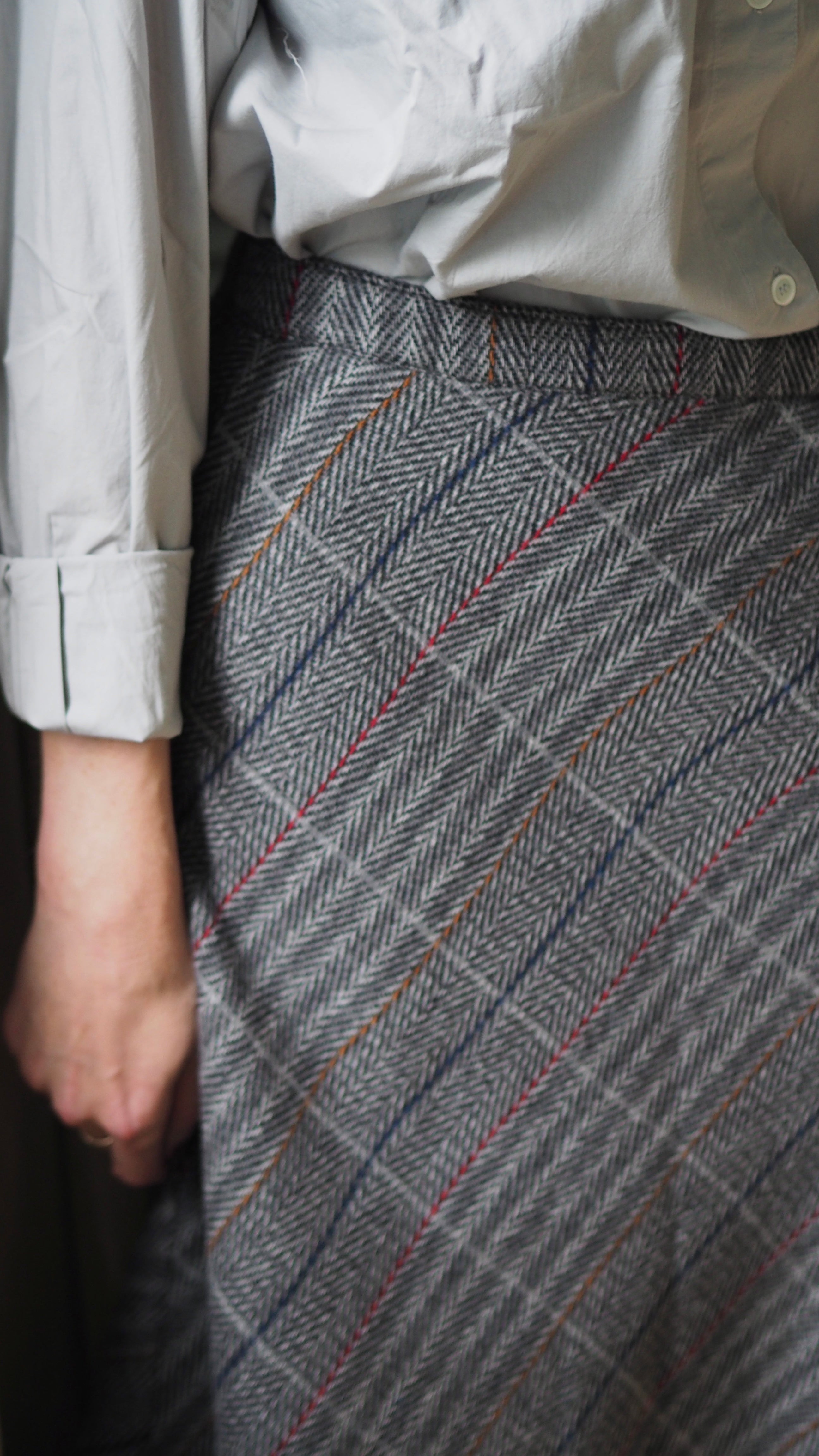Gemma Moulton
Weaving the old and the new
After an early morning flight from Copenhagen, we arrive at Vyner street in Cambridge Heath, East London; a street buzzing with art galleries and small shops. We meet Gemma Moulton at her studio.
Gemma is the founder of the Textile company East London Cloth, which has evolved to become a busy creative studio. It presents a complete fabric and interiors library, providing an East London home for textiles, antiques and interiors objects. As an exciting sidestep, Gemma created CC Moulton: a fabric house designing and producing unique interior textiles, in which Gemma has strived to keep traditional manufacturing methods with the rich aesthetic history of British weaving.

"Everyone knows one another, there is a feeling of neighbourhood."
Vyner street, a little off the beaten track, is famous for its art, but the story of the street goes back to the rag trade, and ever since it has maintained its sense of character, with galleries and creative spaces coming and going. Gemma ́s studio is located in a sixties building that used to be a car garage, hence the observation of high ceilings and concertina doors in the front of her atelier. To her own admission, “it’s a bit more suburban than Bethnal Green, which has more of a city feel”. All and all a depiction of the best of both worlds between trendy areas like London Fields and the connectedness of Bethnal Green. The street, famous for its galleries, has always had a creative nature. Gemma tells us that when they moved in, it immediately felt like home. “Everyone knows one another, there is a feeling of neighbourhood”.
A little more about Gemma: She grew up in Suffolk, in an area that has been at the forefront of British silk weaving for centuries. A deep creative nature was instilled by her grandmother at a young age and she fell in love with textile production during a spell working in the couturier department at a local mill.

“I always loved designing fabrics, the weaving process, choosing the colors... and making the fabric come to life. I love that part of the process”
During a quick coffee at the studio, she tells us about her love and passion for fabrics, and how learning to work with it at a young age has had a big impact on her future path. “My love for fabrics comes from when I was working in the mill, developing an understanding of the practical nature and even though my focus and work is focused on the design, I think having a practical understanding of the things you are working with is really important.”


While looking at her stunning and intricate fabrics we talk about the British weaving industry. She explains of the importance of supporting local craftmanship and local mills, following traditions, but also current sustainability practices. For her, it always had a special meaning, as it is so close to her home.
We asked her what sparked her sense of creativity and she mentions that “the spark has always been there.” She remembers being at school, seated in class, just being completely consumed with ideas and looking forward coming home and editing a magazine, writing or making something... ”That was really exciting to me” she says. “I did not realize I was this different at a young age.”


"I was always fascinated by the old fabrics, with so much heritage, and presenting them to the modern
day is so exciting”.
The conversation continues about her inspiration, and how the old and the new intertwine. “Its interesting how the two meet; I was always fascinated by the old fabrics, with so much heritage, and presenting them to the modern day is so exciting”.
She has been able to explore, see and touch century-old fabrics from several archives in the UK, and when we asked her about her dream project, she confesses that it might become true soon as she is thinking of redeveloping some of the old fabrics originally created by the mill for Queen Victoria ´s Husband for the Great Exhibition.
After a short walk through the park we arrive at her house. A publicly listed home, where her and her family of four recently moved to and renovated: “It was a real challenge. I am really drawn to light and space, so I fell in love with this house. The process is really interesting as we needed to learn and work and live within the confines of what was already there, we could not make many changes. It is a very special place” she mentions as we enter.



“Everything in a house should be both beautiful, but also practical.”
She continues to tell us that she took a lot of inspiration from the Georgian and Arts and Crafts eras, where things were less industrialized and great importance was placed on craftmanship and longevity. “Everything in a house should be both beautiful, but also practical.”
Eventually the subject of nostalgia comes up. She confesses that it makes her sentimental. “I don’t know if it’s part of the creative process, but its something that resonates with me immensely” she mentions. She quickly adds that “keeping one foot in the present is really important, though”.



While exploring around the house and getting ready for dinner we asked her how she manages to balance a creative studio, her own creative projects, a family, a home, all at the same time. She mentions that “I think it is a cruel false dream that we are fed, that we can do it, it’s not realistic. The best thing that I have learned and accepted is that when one thing has to slip to support another area you have to become okay with it. I used to struggle with that feeling of when something at home wasn’t perfect.. the best thing to learn is to not give yourself such a hard time.”

We ended the day with a cozy dinner together with Gemma at one of her favourite restaurants in London: Rochelle Canteen, a gorgeous garden restaurant and London landmark, hidden away in the backstreets of Shoreditch.

Images and text cannot be shared without permission.



























